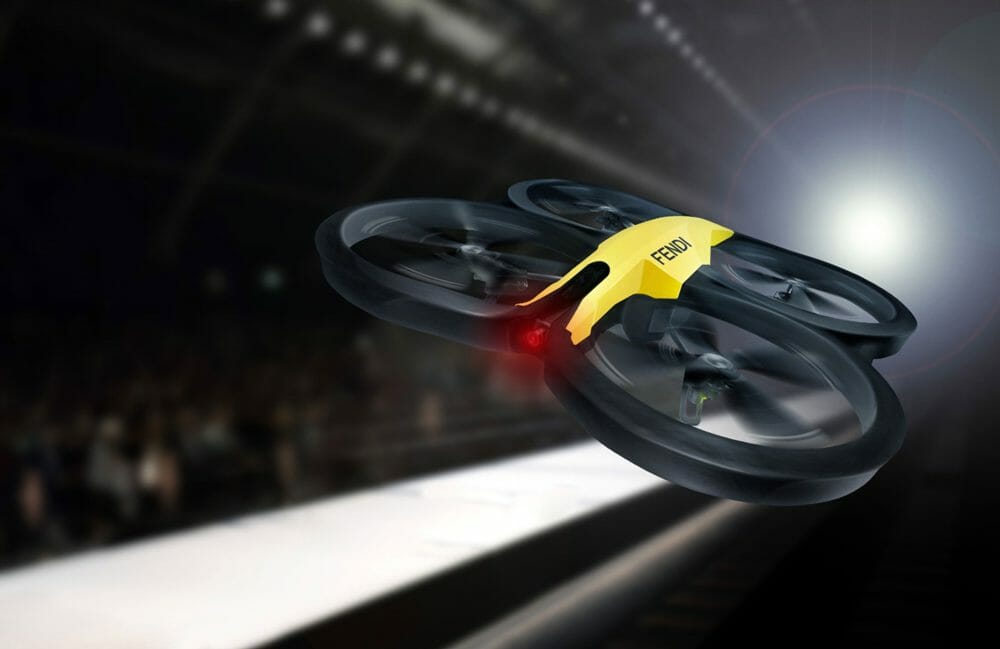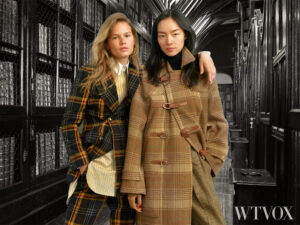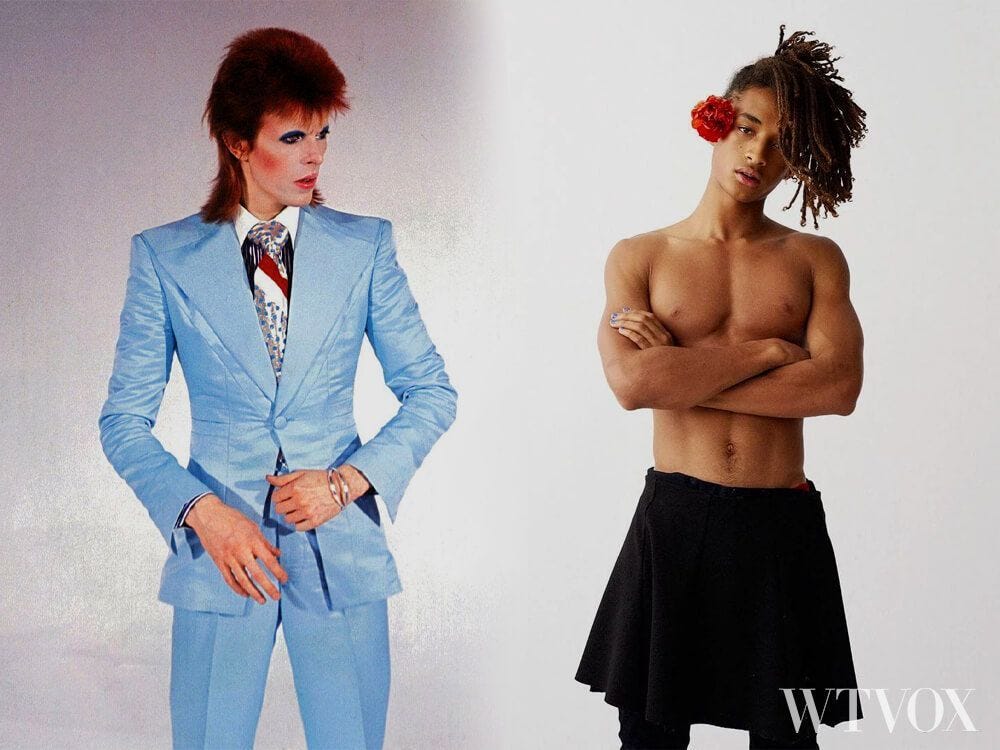Fashion Shows, the old is new again – Let’s talk about Kanye West, his Twitter rants and the buzz around his latest album, “The Life of Pablo.” Not quite about Kanye but more about his Madison Square Garden show, where he combined his collection “Yeezy Season 3” with the music of the album mentioned above.
Fashion Shows – The Eye Opener
In collaboration with Vanessa Beecroft, an Italian contemporary artist, the format of the show expanded on the intertwined relationship fashion has with the music industry. From the rave culture and subcultures of the 80’s to the refined classical interpretations of the contemporary times.
But Kanye’s show was different in its forecasting of the next fashion show, the catwalks of the future. More than music playing in the background, or bands performing pre and post event, Kanye’s event was a spectacle, bathing the public in unseen and unheard sensorial explosions.
Supremely orchestrated, choreographed, synchronised and most importantly, broadcasted live, for the entire world to watch.
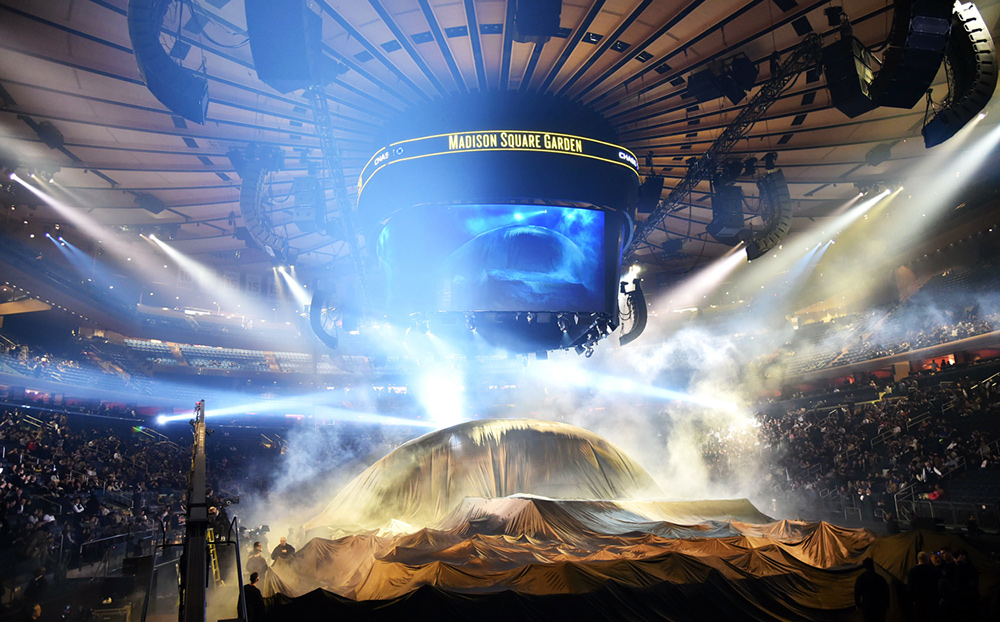
The Italian artist Vanessa Beecroft collaborated with Kanye on the staging of his Yeezy fashion line.
Fashion Shows – A Not So New Idea
It is worth noting that Kanye’s show concept is not his invention but it draws its roots from the very American concept of “absolute show”, maybe not so familiar here in our much more reserved, Europe.
It is a type of format that combines music and entertainment with the power of the Internet, the power of reaching the entire world, online.
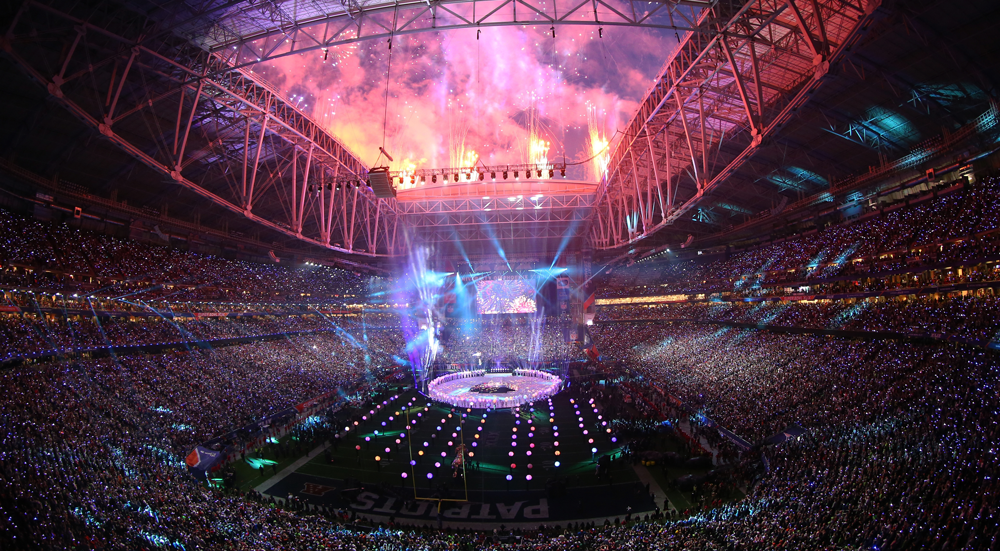
A general view as singer Katy Perry performs during the Pepsi Super Bowl XLIX Halftime Show.
Back in 2015, February the 1st: Super Bowl XLIX streamed live on YouTube with Katy Perry, Missy Elliott and Lenny Kravitz invited as special guests. The format was spectacular, with the “halftime” show attracting 118.5 million viewers.
It was the largest audience in the history of the Super Bowl, a new type of show that won the organisers two Emmy Awards later that year. The format was there for Kanye to take; replace the entertainment with fashion, and it has to work.
Fashion Shows – The Shows Of The 19th Century
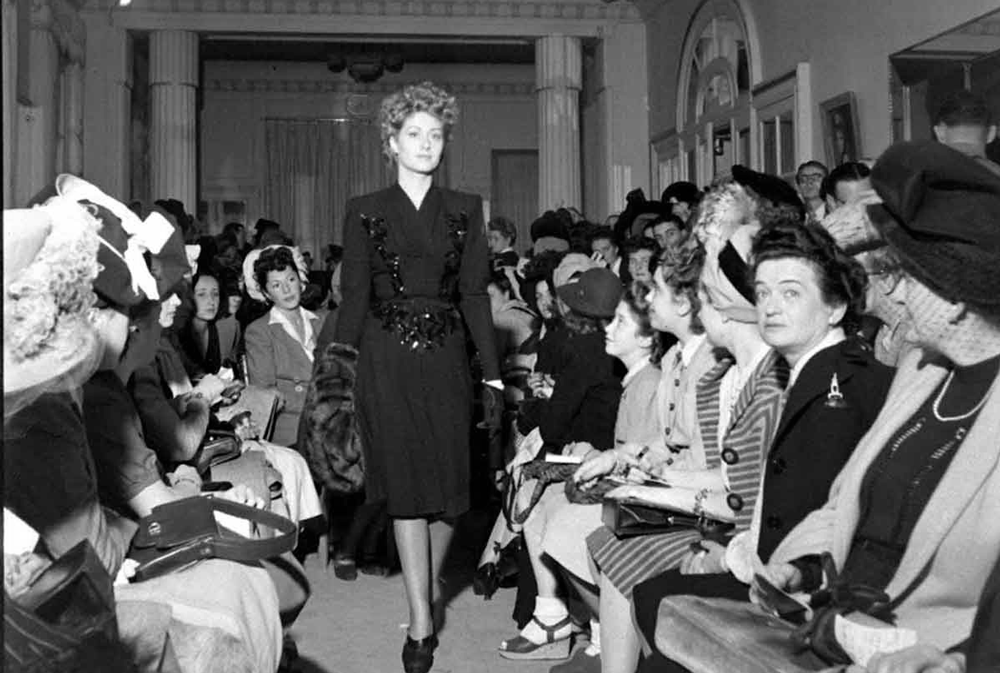
The first catwalks were a way for the fashion designers (tailors) to present their collections to wealthy clientele.
If arguably, the fashion industry did not change much over time, the evolution of the fashion show is an entirely different story. The first fashion shows were a much more modest affair and evolved from their 19th-century living-room presentations were the only spectators were the editors and wealthy individuals to the catwalks of the 20th-century.
Fashion Shows – The New Buyer
The audience has changed too; from the handful of interested buyers that were paying undivided attention to the models on the runway to the 20th-century front rows seats of sunglasses-wearing A-list celebrities, teenage socialites selfie-augmenting their digital persona, live, on Twitter and Instagram.
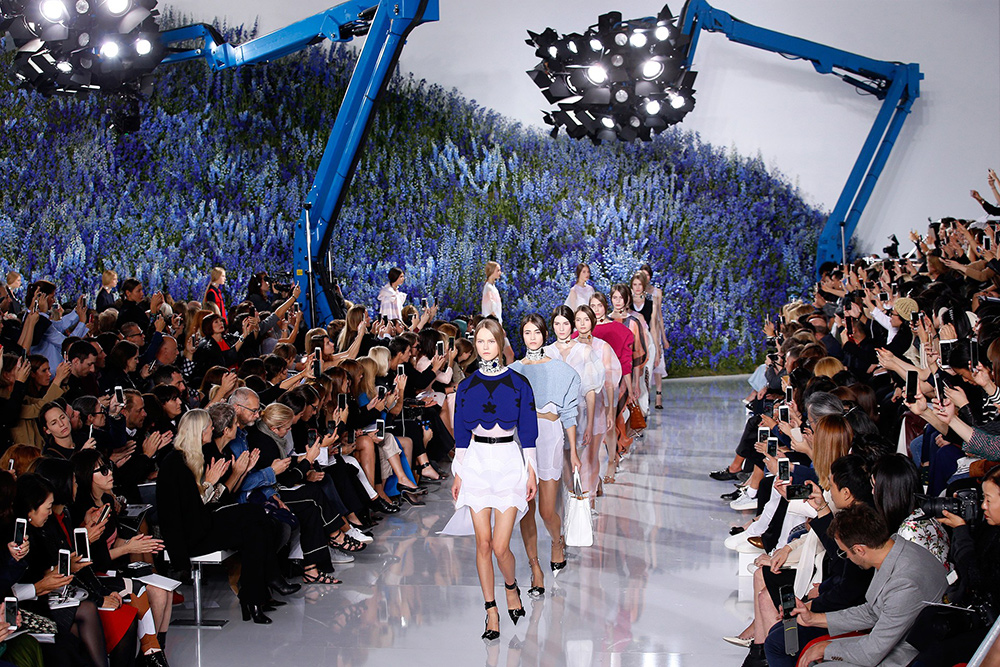
The digitisation of fashion started with the smartphone and social media.
These days, the fashion industry faces further transformations. Technologically driven this time as the latest tech advancements have shown the capacity of transforming the future catwalks into the most attractive media and fashion shows of tomorrow, globally available, online, via the internet.
Fashion Shows – Technological Demand
Right from the times of the ancient Rome, thanks to Juvenal’s “Panem et circenses”, the ultimate show formula is the best form of entertainment. Some of you might feel offended by my not so flattering analogy.
By the idea of turning the uniqueness and the mystic of luxury fashion into a show but here’s the difference: Kanye’s line is not luxury fashion. It has no heritage; it has no craftsmanship. It is contemporary fashion.
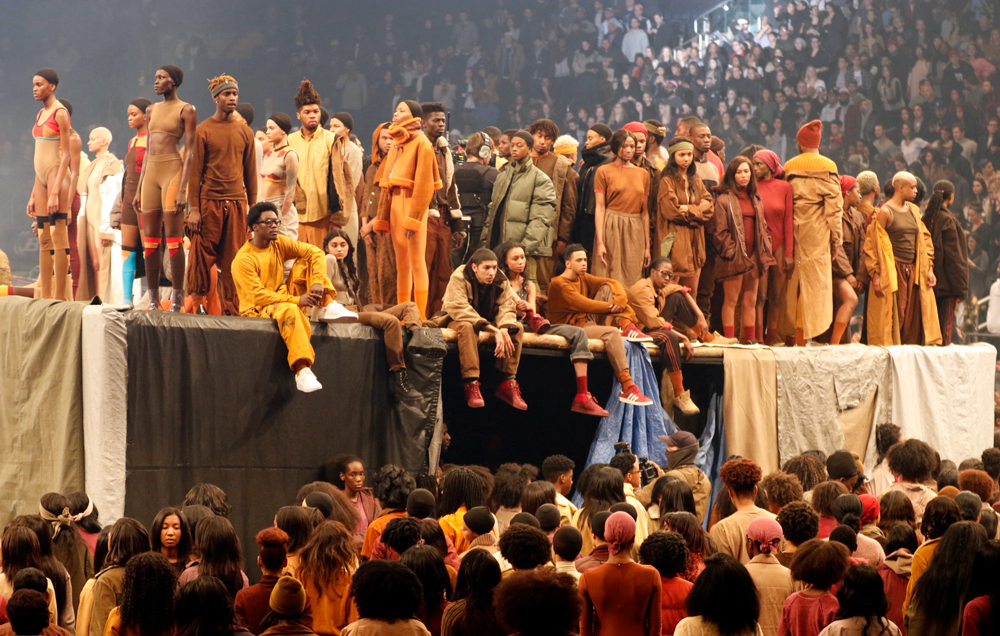
Models wear fashion from the Yeezy collection at a presentation and album release for Kanye West’s latest album, “The Life of Pablo.”
You might say that the concept of fashion and tech type of show only works by appealing to the misfits and the rebel ones, or marketing wise, to that particular segment.
Moreover, you are right, but this so-called segment is becoming your new generation of buyers, a generation that adores technology. A new generation that wants tech in their garments.
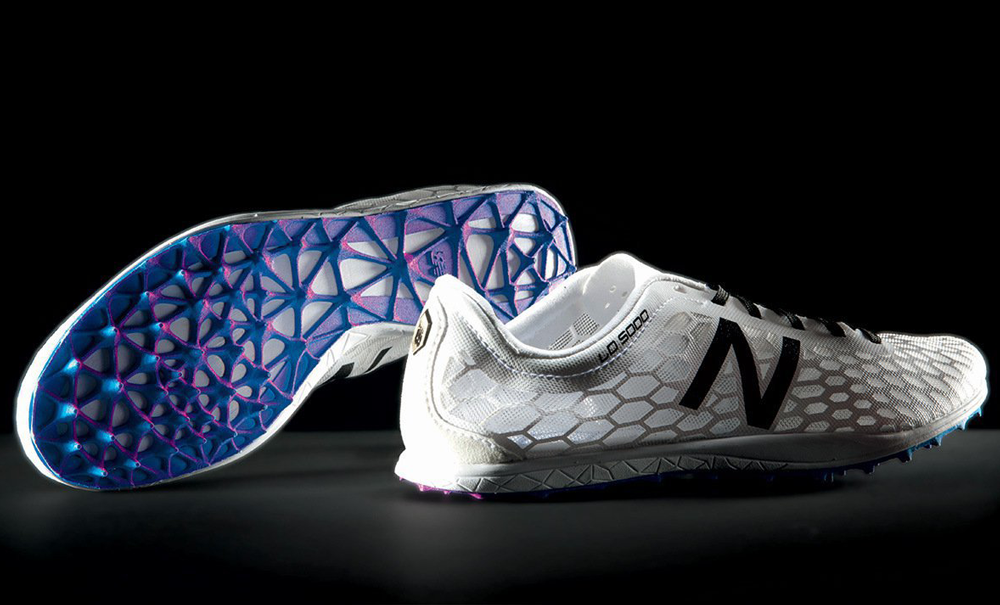
3D printed smart shoes from New Balance.
Generation Z or call them as you like, is not a market segment but your wake-up call. Pointing to a new type of emerging buyer that has technology at its core, as the foundation of everything it does.
A generation that first thinks technology and then builds around it. A generation that values the Internet as important as the food and water; no longer a demand but a need.

There is no free water or free food in the Thai tuk tuk’s but there is free Internet.
Fashion Shows – Technology, More Than Demand
The fashion industry needs to come alive and re-think the catwalk shows of tomorrow. Fashion must adopt technology and repaint its colours, reshuffle its feathers, bright up its lights and recreate the magic.
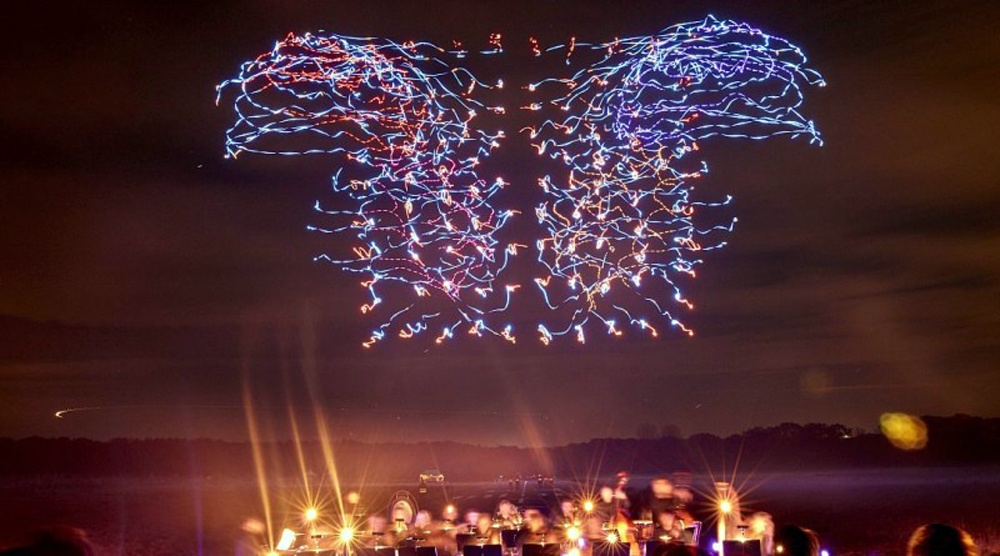
Music, lights, lasers and drones: Intel’s latest fashion show.
Only technology can help the fashion industry reinvent itself, fill up stadium-sized fashion catwalks, with designers showcasing their beautiful tech-infused creations, seamlessly interacting with singers and performers, on stage, supported by autonomous drones pre-synchronised with the music, ready to astound the public with their acrobatics and shows of lasers.
Intel’s Choreographed Drone Light Show Is Coming To Vivid Sydney https://t.co/0Rk3vuWzcN #drones #lightshow pic.twitter.com/fNeEx7Vvbd
— Swittch (@SwittchHQ) May 31, 2016
The same drones record and stream the shows live, on the internet. From hundreds of cameras and thousands of angles never seen before, giving you, the spectator at home on your couch, the feeling of participating, of being right there on the catwalk.
The Fashion Industry has already started to adapt to the demands of the “new generation.” A generation of designers and consumers that create and consume “digital” at an accelerated rate, a generation that demands innovation and excitement in fashion.
Through its Dior Eyes VR experiment, the company attempted the introduction of immersive experience and backstage access at its runway shows, but there are much more new technologies the fashion industry must start adopting and use.
The new generation of consumers expects virtual and augmented reality as part of the retail experiences of tomorrow.
New technologies such as virtual and augmented reality, 3D body scanners, 3D Printers, haptic feedback and artificial intelligence. Technology like 3D scanners could be used to take a perfect copy of your body and while you are still enjoying the show, your outfits are shaping up, by a 3D printer.
And again, let me remind you that we are discussing here the next step in fast fashion. Machine made, machine promoted, that is appealing to this new generation of buyers and the way it could work in the tech-driven fashion shows of tomorrow.
Technologies that can augment not only the catwalks of tomorrow but also solve severe problems the industry is facing at the moment, such as the size issue and the need for sustainable manufacturing.
A new type of fashion shows that could also solve the “see now buy now” problem, as the spectator can order any of the streamed designs and creations, as the presentation unfolds, with a simple click of a button.
Fashion Shows – Customising Fast Fashion
A new type of show where the buyer uses the AR and VR technology to customise the outfits, as he likes, from the comfort of his home. You could change the colours, the materials, add or remove smart sensors and once you are happy with your choice, just press a button, and your order is on its way to a very advanced 3D printer.
Technologies that could make the spectator, the buyer, an active participant of the show, in the catwalks of the future. Your prospective customer is a buyer of fashion, music and technology, all in one, in a new type of package, and a new kind of show.
Back to our story, a few hours later, an Amazon drone “knocks on the door” and delivers your order, with a personal video message from the fashion designer himself.
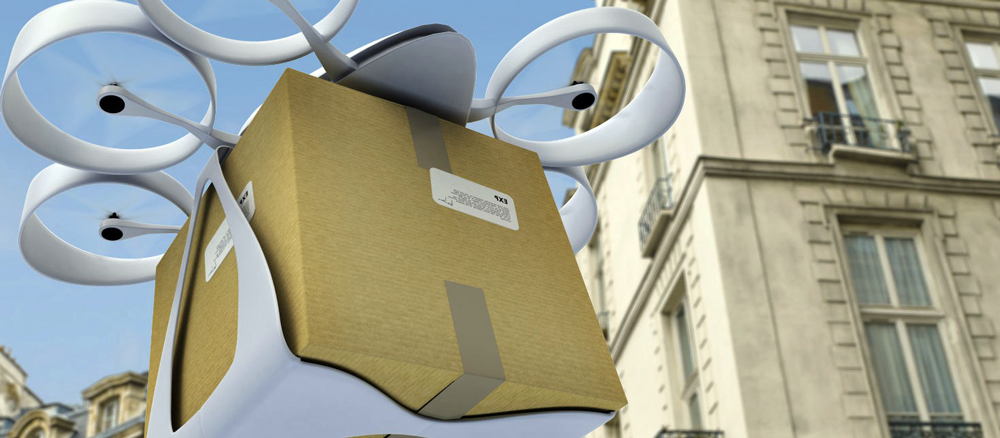
Conform to the drone laws, all drones must have a registration number. Once regulated, drones deliveries will become a common sight.
Fashion Shows – What About Luxury Fashion?
Don’t get me wrong, this concept of the show and fast manufacturing will never appeal to the luxury fashion, and it does not have to be.
Luxury remains the luxury we have always known, where the human governs and reigns supreme. Luxury is unique. Luxury is art. Luxury is emotion.
Moreover, yes, luxury will use emerging technologies, but only in what I call ethereal layers, intended to augment the creations with nanotechnologies; waterproof, dirt repellant, and so on, indirectly adding value but still, the craftsmanship and heritage must remain supreme. But something else is happening that takes us back to Yeezy, music artists and media influencers. have to become creative directors… and customers are responding to that.”
From Cristian Ronaldo to Kanye West and why not Justin Bieber, today’s influencers will become the creative directors of tomorrow, the next generation of luxury fashion, for the next generation of consumers.


